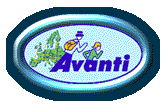Adaptations at the Content Level

(Slide show available)
 ontent adaptations are supported in AVANTI through the Hyperstructure Adaptor (HSA) component, which dynamically constructs adapted hypermedia documents for each particular user. The adaptations to the hypermedia documents are based on a set of adaptation rules, user-related information acquired from the user modelling server (i.e. assumptions about user-relevant characteristics such as knowledge, interests, preferences), and content-related information about multimedia objects that are provided by the content modelling and the multimedia database interface components. ontent adaptations are supported in AVANTI through the Hyperstructure Adaptor (HSA) component, which dynamically constructs adapted hypermedia documents for each particular user. The adaptations to the hypermedia documents are based on a set of adaptation rules, user-related information acquired from the user modelling server (i.e. assumptions about user-relevant characteristics such as knowledge, interests, preferences), and content-related information about multimedia objects that are provided by the content modelling and the multimedia database interface components.
The user characteristics that trigger appropriate adaptation types at the content level, mainly concern (a) the type of disability, and (b) the expertise and the interests of the user. The resulting adaptations include (i) alternative presentation of the information using different media (e.g., text vs. graphics, alternative colour schemes); (ii) additional functionality (e.g., "shortcuts" - adaptive links to frequently visited portions of the system, conditional presentation of technical details, and "role-taking" facilities - allowing users to identify themselves as having a particular disability, or active interest in one); and (iii) different structure and different levels of detail.
Knowledge about the user and the interaction session is mostly based on information acquired dynamically during run-time (e.g., navigation monitoring, user selection, explicit user invocation), with the exception of the initial profile of the user, which is either retrieved from the user modelling component (UMS), or acquired through a questionnaire during the initiation of the interaction.
|





